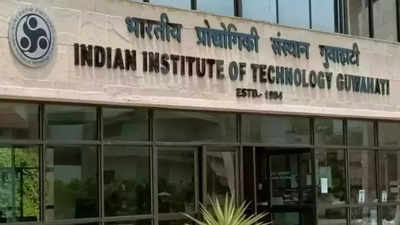New discovery: X-ray polarization in Galactic ULX pulsar challenges current theories | Mumbai News – Times of India


MUMBAI: In a joint study, researchers from the Indian Institute of Technology Guwahati and the Indian Space Research Organisation have made a significant discovery while investigating Swift J0243.6+6124, the first known Galactic Ultraluminous X-ray emitting pulsar. Their findings reveal that the X-ray polarization from this pulsar is much lower than anticipated, challenging current theories about the radiation emitted by these celestial objects.
Neutron stars are created when a massive star runs out of fuel and collapses under its own gravity, compressing its core and converting protons and electrons into neutrons.If the core’s mass is between one and three solar masses, the collapse stops, resulting in a neutron star. These extremely dense objects are the most compact known, with a mass similar to the sun but compressed to the size of a city. Many neutron stars are observed as pulsars, emitting regular pulses of radiation as they rotate. X-ray pulsars are a specific type of neutron star in binary systems, where a highly magnetized neutron star is orbited by a companion star, emitting X-ray pulses.
Ultraluminous X-ray sources (ULXs) are bright X-ray emitters from nearby galaxies that were initially thought to be intermediate-mass black holes. However, some are now considered to be pulsars due to their regular pulse emissions. Swift J0243.6+6124, detected by NASA‘s Swift spacecraft during a strong X-ray outburst in 2017–2018, was identified as the first Galactic ULX pulsar because of its exceptional X-ray brightness.
Scientists worldwide have been studying the nature of polarized X-ray emissions from Swift J0243.6+6124. The ISRO and IITG researchers focused on this source during its active period in 2023, using NASA’s Imaging X-ray Polarimetry Explorer (IXPE) to detect the polarized X-rays emission for the first time. They also combined data from the Neutron Star Interior Composition ExploreR (NICER) and the Nuclear Spectroscopic Telescope Array (NuSTAR) missions. This approach allowed them to gain a deeper understanding of the energy-dependent characteristics of the X-ray pulses from Swift J0243.6+6124.
The researchers discovered that the polarization of X-rays from Swift J0243.6+6124 was much lower than expected, around 3%.
Dr. Anuj Nandi emphasized the significance of these research findings, stating, “The IXPE mission’s unique capabilities made it possible to detect low polarization in X-rays from the first known Galactic ULXPs. Notably, this low polarization appears to vary with the emitted pulses.”
Prof. Santabrata Das, Department of Physics, IIT Guwahati, explained the importance of this discovery, saying, “The discovery of lower polarization in the X-rays from Swift J0243.6+6124 is important because it makes us rethink how these stars work. Neutron stars in binary systems have very strong magnetic fields that direct matter from a nearby star to their poles. This process affects the X-rays we see because the magnetic field influences how the X-rays behave. The polarization of X-rays plays a big role in this. The unexpected low polarization means our current understanding of these magnetic fields and X-rays needs to be updated.”
This surprising result challenges existing theories and raises new questions for further investigation. It also presents new opportunities for studying similar X-ray sources within our galaxy and beyond. The details of this research have been published in The Astrophysical Journal Letters, co-authored by Dr. Santabrata Das, Dr. Anuj Nandi, and researchers Seshadri Majumder, Rwitika Chatterjee, and Kiran M. Jayasurya.















